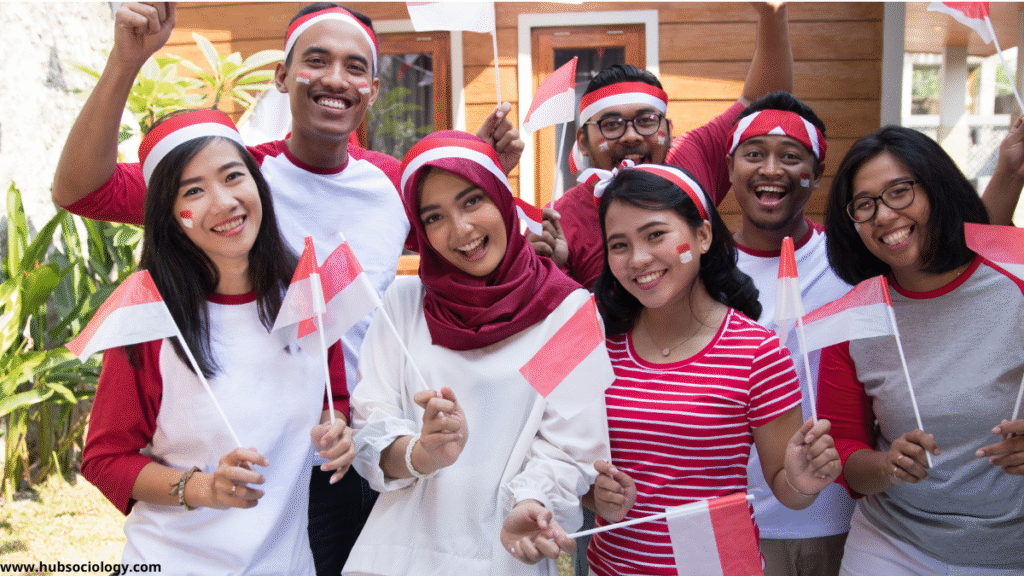Introduction on Urban Sociology in Asia
Urban sociology examines the social structures, processes, and transformations within cities. Asia, as the most populous and rapidly urbanizing continent, presents a unique case study for urban sociologists. The region’s urbanization is marked by diversity—ranging from the hyper-modern cities of Japan and South Korea to the sprawling megacities of India and China, each with distinct social, economic, and political dynamics.
This article provides a sociological overview of urban Asia, focusing on key themes such as migration, inequality, governance, and cultural change. By analyzing these aspects, we can understand how urbanization shapes—and is shaped by—social forces in different Asian contexts.

Table of Contents
1. Urbanization Trends in Asia
Asia’s urbanization is unprecedented in scale and speed. According to the United Nations, over 50% of Asia’s population now lives in cities, with projections suggesting this will rise to 64% by 2050. However, urbanization patterns vary:
- East Asia (China, Japan, South Korea): These countries have highly planned urban growth, with strong state intervention. China’s rapid urbanization, driven by rural-to-urban migration and state-led development, contrasts with Japan’s stabilized urban population and South Korea’s high-tech urbanism.
- Southeast Asia (Thailand, Indonesia, Philippines): Cities like Bangkok, Jakarta, and Manila face challenges of informal settlements, traffic congestion, and environmental degradation due to rapid, often unplanned, urban expansion.
- South Asia (India, Pakistan, Bangladesh): Urbanization here is marked by stark inequalities, with megacities like Mumbai and Dhaka experiencing extreme wealth disparities and slum proliferation.
These variations reflect differing historical, economic, and political contexts, shaping urban social life in distinct ways.
2. Migration and the Urban Labor Force
Migration is a central driver of Asian urbanization. Rural-to-urban migration fuels labor markets but also creates social tensions. Sociologically, migration affects:
- Class and Labor Segmentation: Many Asian cities rely on low-wage migrant workers in construction, manufacturing, and domestic work. In Gulf-influenced South Asian cities, foreign labor migration creates transnational urban connections.
- Gender Dynamics: Female migrants often dominate domestic and care work (e.g., Filipina domestic workers in Hong Kong and Singapore), leading to gendered urban labor markets.
- Social Exclusion: Migrants frequently face discrimination, lack access to housing, and are excluded from urban welfare systems. China’s hukou system, for instance, denies rural migrants full urban citizenship rights.
The precarity of migrant labor highlights the intersection of urbanization, capitalism, and social inequality.
3. Urban Inequality and Spatial Segregation
Asian cities exhibit extreme inequalities, visible in their spatial organization:
- Slums vs. Gated Communities: In Mumbai, Dhaka, and Manila, slums coexist with luxury high-rises. This spatial segregation reflects deep class divides.
- Gentrification: Cities like Seoul and Shanghai experience state-led gentrification, displacing low-income residents in favor of commercial development.
- Informal Economies: Street vendors, waste pickers, and informal settlements form a critical yet marginalized part of urban economies.
These inequalities are exacerbated by neoliberal urban policies that prioritize corporate interests over social welfare.

4. Governance and Urban Politics
Urban governance in Asia varies between authoritarian control and democratic decentralization:
- Authoritarian Urbanism (China, Singapore): The state tightly controls urban planning. China’s top-down urbanization projects relocate millions for infrastructure development, often without adequate consultation.
- Democratic Challenges (India, Indonesia): Urban governance is fragmented, with struggles between municipal bodies, private developers, and citizen activists over land use and housing rights.
- Smart City Initiatives: Many Asian governments promote “smart cities” (e.g., India’s Smart Cities Mission), but these often prioritize technological solutions over social equity.
The tension between state control and grassroots resistance defines urban politics across the region.
5. Cultural Change and Urban Identities
Urbanization transforms cultural practices and identities:
- Youth and Subcultures: Asian cities are hubs for youth movements, from K-pop in Seoul to protest cultures in Hong Kong.
- Religious and Ethnic Enclaves: Cities like Kuala Lumpur and Delhi see ethnic neighborhoods (e.g., Chinatowns, Little Indias) that maintain cultural traditions amid urban change.
- Consumerism and Globalization: Shopping malls, fast food chains, and global brands reshape urban lifestyles, creating hybrid cultural forms.
These cultural shifts reflect both globalization’s influence and local adaptations.
6. Environmental and Health Challenges
Asian cities face severe environmental pressures:
- Pollution and Climate Vulnerability: Delhi and Beijing suffer from hazardous air pollution, while coastal cities like Jakarta face flooding due to climate change.
- Public Health Crises: High-density living exacerbates disease spread, as seen during COVID-19 in cities like Mumbai and Wuhan.
- Sustainable Urbanism: Some cities (e.g., Singapore) lead in green urban planning, but most struggle with unsustainable growth.
Environmental sociology highlights how urbanization intersects with ecological crises.
Conclusion on Urban Sociology in Asia
Urban sociology in Asia reveals a complex interplay of migration, inequality, governance, and cultural change. The region’s urbanization is not uniform—it reflects diverse historical trajectories and contemporary struggles. Future research must address how Asian cities can achieve inclusive, sustainable development amid rapid growth.

Understanding these dynamics is crucial not just for sociologists but for policymakers, activists, and urban dwellers navigating Asia’s evolving urban landscapes.
Do you like this this Article ? You Can follow as on :-
Facebook – https://www.facebook.com/hubsociology
Whatsapp Channel – https://whatsapp.com/channel/0029Vb6D8vGKWEKpJpu5QP0O
Gmail – hubsociology@gmail.com
Topic Related Questions on Urban Sociology in Asia
5-Mark Questions on Urban Sociology in Asia (Short Answer)
- Define urban sociology and explain its relevance in studying Asian cities.
- What are the key differences between urbanization in East Asia and South Asia?
- How does rural-to-urban migration impact labor markets in Asian cities?
- Briefly describe the concept of “spatial segregation” in urban sociology with an example from Asia.
- What role do informal economies play in Asian cities?
- How does China’s hukou system affect rural migrants in urban areas?
- Name two environmental challenges faced by Asian megacities.
- What is “gentrification,” and how does it manifest in Asian cities?
- How do smart city initiatives in Asia impact urban governance?
- Give an example of how globalization influences urban culture in Asia.
10-Mark Questions on Urban Sociology in Asia (Detailed Answer/Essay-Type)
- Discuss the relationship between urbanization and social inequality in South Asian cities. (Use examples from India, Pakistan, or Bangladesh.)
- Analyze the role of the state in urban development, comparing China and India.
- How does gender shape labor migration patterns in Asian cities? Provide examples.
- Explain the concept of “authoritarian urbanism” with reference to Singapore or China.
- What are the causes and consequences of slum proliferation in Southeast Asian cities? (Jakarta, Manila, etc.)
- How do ethnic and religious enclaves contribute to urban identities in multicultural Asian cities? (Examples: Kuala Lumpur, Delhi, Singapore.)
- Discuss the impact of COVID-19 on urban life in Asia, focusing on migrant workers and public health.
- Compare the effects of neoliberal urban policies in two different Asian cities.
- How do youth subcultures reflect broader social changes in Asian urban spaces? (Examples: K-pop in Seoul, protest movements in Hong Kong.)
- Evaluate the effectiveness of “smart city” projects in addressing urban challenges in Asia.
15-Mark Questions on Urban Sociology in Asia (Critical Analysis/Comprehensive Essay)
- “Asian urbanization is marked by both rapid growth and deep inequalities.” Critically analyze this statement with sociological perspectives.
- Examine how migration shapes social structures in Asian megacities, using case studies from China, India, and the Philippines.
- Discuss the role of urban governance in addressing (or exacerbating) environmental crises in Asian cities. (Examples: Air pollution in Delhi, flooding in Jakarta.)
- How do global capitalism and neoliberal policies influence urban development in Asia? Support your answer with case studies.
- “Asian cities are sites of cultural hybridity and conflict.” Evaluate this statement with reference to youth cultures, consumerism, and ethnic identities.
- Compare and contrast the urban sociological challenges faced by East Asian and South Asian cities.
- Analyze the impact of gentrification on marginalized communities in an Asian city of your choice.
- How does state-led urbanization in China differ from market-driven urbanization in India? Discuss the social consequences of both models.
- “The future of Asian cities depends on sustainable and inclusive planning.” Critically assess this claim using sociological theories.
- Why is informal housing a persistent feature of urbanization in Asia? Discuss with reference to theories of urban informality and policy responses.
Additional Discussion Questions on Urban Sociology in Asia (For Seminars/Group Work)
- Should Asian cities prioritize technological solutions (smart cities) over social equity in urban planning?
- How can urban sociology help address the challenges of climate change in Asian cities?
- What lessons can other developing regions (Africa, Latin America) learn from Asia’s urbanization experiences?

5 thoughts on “Urban Sociology in Asia: A Regional Overview”